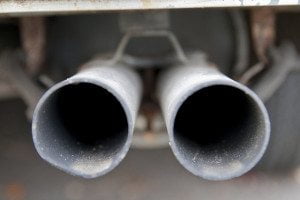

Environment
4 Ways Driving Hurts the Environment and Your Health
Most Americans commute into the city from a suburban neighborhood rather than live close enough to walk to the office. Thus, the average time they spend driving to work is 25.5 minutes.
That totals nearly an hour that every day people spend in compulsory driving (as opposed to shopping or recreation), and all that time in the car is taking its toll on both you and the world around us.
For example, an hour of driving per day has considerable impact on the environment. More than 19 pounds per gallon of carbon emissions come out of the average vehicle’s tailpipe. That’s approximately 40 pounds per day per person!
We can see the effects of this kind of pollution in the environment and in your body. Here are some of effects of frequent driving that have the most notable impact.
1. Increase in Climate Change
Our atmosphere evolved to enable excess heat to slip through the atmosphere and beyond, which effectively keeps things cool down near the surface of the planet. As more carbon emissions float into the environment, they block that heat from escaping.
The emissions build up and form a kind of insulation that keeps heat trapped around the earth, and vehicles are a major source of those emissions. Last year, reports showed that the planet is steadily warming.
2015 was the hottest year on record, and 2016 is slated to be even hotter. These are strong hints that vehicle emissions are having a serious effect upon our comfort on this globe.
2. Higher Risk for Drunk Driving
Every year, nearly 10,000 people are killed in drunk driving crashes. That’s comes to about one fatality every 53 minutes. When you regularly put yourself on the road for a long commute, you’re significantly increasing the risk of running into a drunk driver, and perhaps even driving while impaired yourself.
This is not just illegal and likely to cost you a hefty sum in legal fees, but it could lead to an early death, whether yours or that of an innocent victim you hit.
3. Poorer Air Quality
Smog is a major issue in highly populated areas that suffer from poor air quality. It’s a direct product of carbon emissions, for which vehicles are a major contributor.
When people live in areas where the air has lower quality, this increases the risk for illnesses such as asthma, allergies, bronchitis, and other acute respiratory conditions. Air pollution can also increase a person’s risk of lung cancer and emphysema — chronic conditions that can often be fatal.
In short, people who live in areas with low air quality tend to experience a higher mortality rate.
4. Rising Blood Sugar and Cholesterol
Studies have shown that people who drive more than 10 miles per day tend to register higher levels of blood sugar and cholesterol. Both of these conditions can lead to other, severe health issues, such as diabetes and heart disease.
With relation to the blood-sugar issue, your blood pressure can also spike temporarily when you’re in a high-stress traffic situation. High blood pressure is known as “the silent killer,” because it strikes when we least expect it.
These are just a few of the ways that driving can have severe adverse health effects over time. Your mortality rate rises significantly with each hour you spend at the wheel, as does the declining state of the environment.
Seeking alternative forms of transportation and reducing your carbon emissions could do a world of good for you and everyone around you.
































